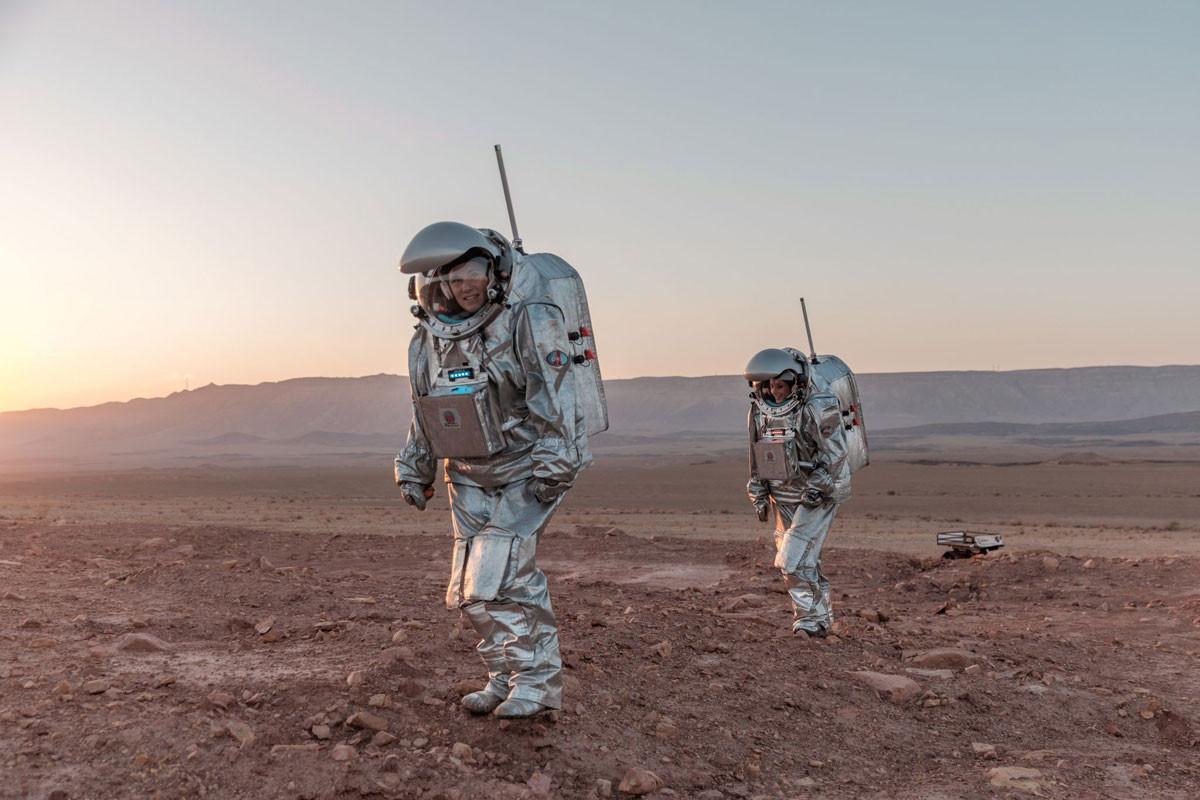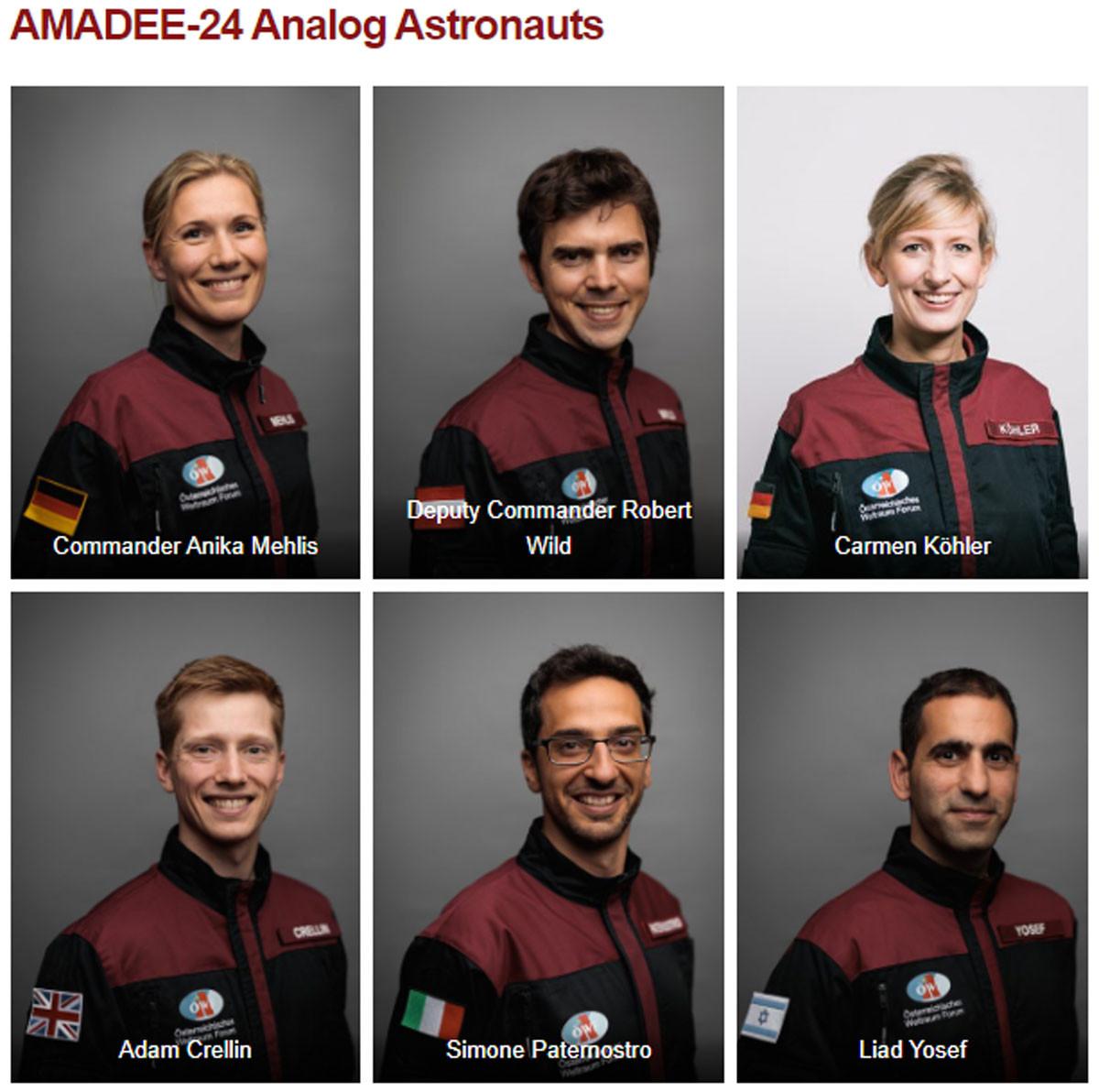
Armenia to Hold Mars Simulation Mission in 2024
On April 17th, a delegation from the Austrian Space Forum (OeWF) signed a cooperation agreement with the Armenian Aerospace Agency in Yerevan to carry out a four-week Mars mission simulation in Armenia in March-April 2024.
OeWF-Director Dr. Gernot Grömer tells Hetq that a test site in Armenia has not been selected yet for the six AMADEE-24 astronauts to conduct experiments preparing for future human and robotic Mars exploration missions.
Grömer, an astronomer and astrobiologist, smiles when we talk about a crater on Mars named in honor of the Garni Temple. According to NASA, traces of water were found in this crater. In 2015 on April 24, the crater was given the name Garni. Grömer says that he recently visited Garni's temple and hopes to see the Mars Garni crater one day.
Why Armenia?
Grömer says all four candidates have similar geology, which made the choice difficult. The most important factor for choosing Armenia was its innovative culture. The Austrian astronomer says there are many startups and great minds in Armenia, and they thought that the country has the technical and scientific resources to host the 2024 Mars simulation. In addition, the presence of important infrastructures (for example, medical) that are necessary for the implementation of the project was important.
Armenian Aerospace Agency Director Mher Mehrabyan says the process of choosing Armenia was difficult. In November 2022, the Austrians came to Armenia, visited areas resembling the surface of Mars, took soil samples, and then studied them in Austria. They also considered the ambitions of the candidate country's space programs and its heritage in that field.
"Armenia is not entering the space field but is re-entering the space game thanks to its rich traditions, as it was fifty years ago, when the first rover created by an Armenian successfully landed on Mars," says Grömmer.
He’s referring to the world's first rover, the Soviet "PrОP-М", whose chief designer was Alexander Kemurdzhian. On December 2, 1971 the Soviet Mars-3 space probe's lander made a soft descent on Mars, making the first successful landing on the Red Planet. It carried Kemurdzhian’s rover, which was supposed to conduct research on the planet’s surface. A storm broke the lander’s connection to Earth fifteen seconds after the landing.
The AMADEE-24 astronauts will also be monitored for how they react to stress and isolation. Each candidate is examined on 637 individual parameters, starting from weight, blood cholesterol levels, etc. After passing the selection, specialists undergo five months of basic training.
Grömmer notes that in the training of analog (simulation) astronauts, as in the case of real astronauts, even seemingly trivial phenomena in everyday life are essential. For example, due to physical exertion, a person begins to sweat, itching may occur, but astronauts wearing an enclosed suit cannot scratch their body. Special ointments are used to control itching and sneezing.
All simulation research data is transmitted to the Mission Support Center in Austrian where a large team of workers monitors the actions of the astronauts. Grömer says 250 researchers and scientists from twenty-five countries will participate in AMADEE-24.
In addition to its scientific significance, AMADEE-24 will also have an educational component. The Austrian scientist says the program will include young Armenians who will undergo training in Austria. Cooperation with Armenian specialists will continue after AMADEE-24. This implies the development of skills in the field of science and technology.
"It may sound strange, but we are grateful for every mistake we will make here in Armenia, because we won't repeat them later. It's about learning and having an effective vision for Mars," says the director of the Austrian Space Forum.
Armenia's Expectations
"This will give Armenia an opportunity to demonstrate its international space ambitions, as well as recognition," says Mehrabyan. “We have never had an Armenian space program, so to speak. Everyone knows that many Armenian great scientists and engineers participated in many programs, but we did not participate under one banner. This is the first time we have to take such a big step."
Armenia’s National Center for Innovation and Entrepreneurship is hosting the AMADEE-24 mission. Hayk Margaryan, the Center’s director, says participating in the upcoming analog research will give Armenian scientists the opportunity to work together and perform experiments with foreign partners. “This is the first step and the center will try to bring more programs to Armenia afterwards,” he tells Hetq.
AMADEE project photos from oewf.org, main photo from AMADEE-20
 Videos
Videos Photos
Photos






Write a comment